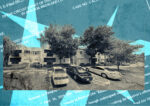A developer broke ground last week on L.A.’s first project to take advantage of the Opportunity Zone program, the controversial tax break that is now subject to an internal Trump administration investigation.
Construction started on an eight-story, 200-unit residential development at 1522-1538 Cassil Place in Hollywood by developer Bond Companies, which a city spokesperson corroborated is the first city-approved Los Angeles project to utilize Opportunity Zone tax breaks. The project is expected to cost roughly $100 million, and it is slated for 2021 completion.
The multifamily project highlights the possibilities of Opportunity Zones, a program that the U.S. Treasury Department Inspector General’s office launched a probe of last week. The IG is exploring whether certain census tracts were improperly selected as eligible for the program, and there is also criticism that Opportunity Zones gratuitously line the pockets of wealthy developers.
Here in L.A. those concerns are exacerbated by the more mundane matter of figuring out how the program works, a laborious process that has likely discouraged some developers.
“It has been a very slow roll out,” said Michael Krueger, a lawyer at Newmeyer Dillion, who advises developers on the program. Krueger notes that the Internal Revenue Service has had to issue “multiple rounds of guidance” just to clarify to investors and developers what was permitted.
Nonetheless, Krueger is optimistic that the final set of IRS regulations announced last month will open the floodgates. “I think investors are finally understanding what the requirements are,” Krueger said.
Tucked into a Republican-led Congress and President Trump’s 2017 tax overhaul plan, Opportunity Zones were ostensibly created to spur economic development in low-income areas, generally defined as census tracts with a poverty rate of 20 percent and median family income of 80 percent of the surrounding metropolitan area.
California nominated, and the federal government approved, nearly 900 census tracts that are eligible for the tax breaks. Identifying qualifying census tracts might seem the relatively straight forward part – though that’s the component the Treasury Department is now investigating.
Generally speaking, a developer who purchases an Opportunity Zone eligible project can defer their capital gains taxes until 2026, or the date on which the Opportunity Zone project is sold. Should the developer hold on to their project for longer than seven years, they receive at least a 10 percent reduction on their capital gains taxes.
Having received project approval by Dec. 31, 2019, Bond Companies will score a 15 percent reduction on their capital gains taxes in 2026, if the firm does not sell the property before then.
“It encourages stability in real estate, because you get a tax break by holding onto the project,” said Larry Bond, of Bond Companies.
A handful of other city projects in Opportunity Zones have been submitted for Planning Commission approval, though none have been cleared with city planners and the L.A. city council.
Although the city is trying to increase the awareness of the program by creating networking events and reaching out to the real estate community, the city’s role is limited. “This is not a city-managed fund,” said Christine Kalamaros, a spokesperson for the Economic Development department.
Bond said that he was happy to take advantage of the Opportunity Zone program. But he also noted that the Cassil Place project takes advantage of a simpler incentive, one created by the city of L.A. – transit-oriented communities, in which projects by metro stops have relaxed density requirements. Bigger projects, bigger profit margins.
“I think the fanfare for Opportunity Zones was highly overrated,” Bond said. “But it is a nice tool for specific projects and areas.”




